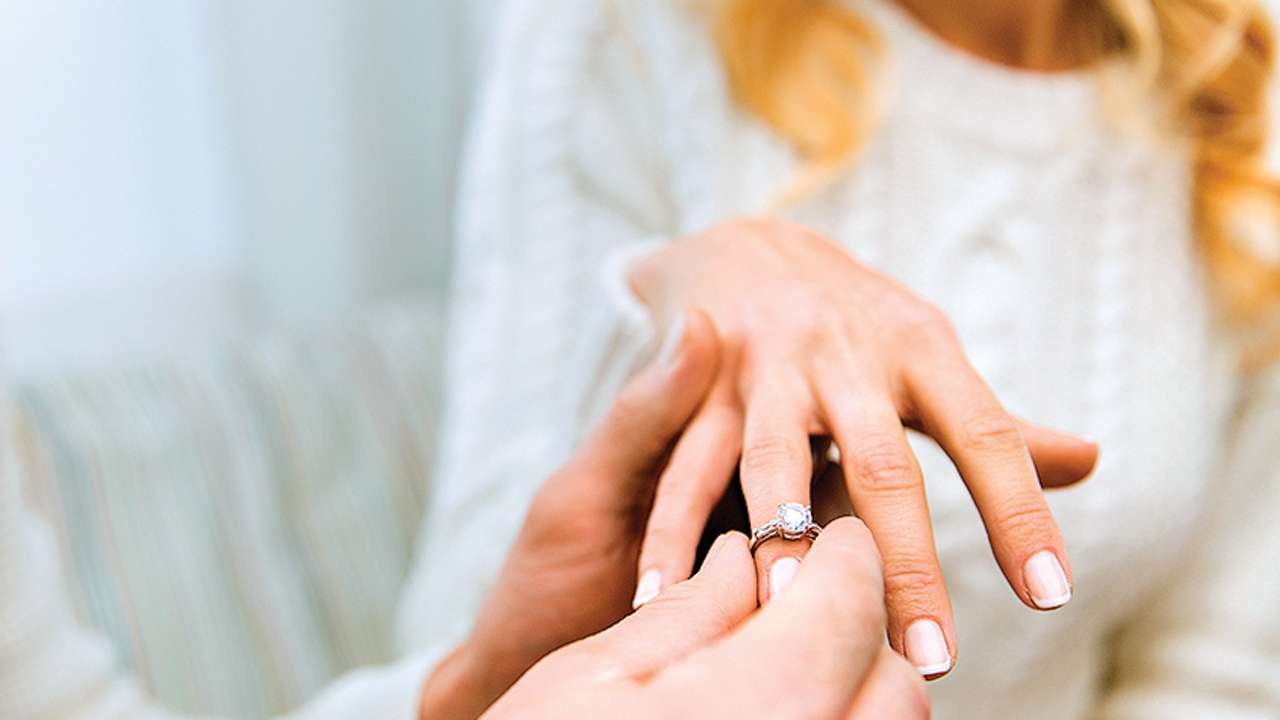
A bended knee proposal, surprised emotions and a loud acknowledgment – Yes! This, happiest of all occasions, is marked with the quintessential engagement ring. A ring that was once a symbol of husband's ownership in ancient Egyptian and Roman culture. "There is historical proof of the practice of giving and receiving engagement rings dating as far back as ancient Rome. The ancient Egyptians and Greeks are also regularly cited as the inventors of engagement rings," says former Director of De Beers India Prasad Kapre.
For 27-year-old Indrabati Sarkar, who will be married come March 2019, jewellery is only meant to be worn for ceremonies. "I don't mind wearing jewellery on the engagement day. I have a problem with wearing something constantly." Her argument is that family ornaments or jewellery worn to symbolise marriage might just cramp up her usual style. "Commitment doesn't need a showcase," she asserts.
Growing up with a mother who didn't believe in wearing sindoor (vermillion red colour powder, worn in the middle partition of a woman's hair) or changing her surname after marriage, Sarkar says, "You don't see your father or male members wearing jewels. When you realise that these are just customs, they can be changed."
The origin of the engagement ring began with an ad campaign for diamond behemoth De Beers. "With slogans like 'A diamond is forever' and the diamond eternity concept rings, they appealed to the notion of commitment," begins jewellery historian Dr Usha Balakrishnan. Closer home, the ritual of women wearing jewellery to denote betrothal or marriage began centuries ago. "There is no literary stipulation as to when these customs began, but if we look at paintings and sculptures, even as early as the 11th century, there is a mention of the mangalsutra, where the Chola sculptures show women wearing tight necklaces," she says.
Like the ownership signifying engagement ring, a married woman is clad in maang tikkas, nose rings, toe rings, kamar pattas (waist band) and a number of other jewels; while the man retires, looking rather plain in comparison. For Dr Balakrishnan, these are "physiological necessities," and not just jewels signifying marriage. "These are worn on parts of bodies that have certain energy centres. Wearing jewellery on that part stimulates the energy point.
For instance, the kamar patta protects the uterus and is meant to improve a woman's fertility. The head is the fulcrum of all the energies in the body so maang tikka is worn to stimulate the energy point. All of jewellery boils down to protection, fertility, keeping away the evil eyes and harnessing positive energies for the wearer," she says.
But why this disparity in male, female adornment rules? Balakrishnan says this wasn't always so. "Men had to pierce their ears as soon as they enter the period of learning because the holes in their earlobes were supposed to open up the intellect for them. It also protected their prostate. So as he grew older he would be shielded from those diseases." Apart from ear piercings, Balakrishnan adds that men wore holy threads, arm bands, anklets and bracelets. "However, with Western influences, perhaps in the 18th and 19th century, this practice died down for the men and jewellery came to be associated with femininity."
Yet, wearing jewellery to showcase wedded bliss still solely rests with the woman. "Being a man’s gift to the woman of his dreams it was not a custom for the man to wear an engagement ring, however today it has changed to being the ‘exchange of rings’ and so the man/groom does wear an engagement ring," Kapre justifies. While Balakrishnan prefers to view this as setting women apart and placing them on a pedestal rather than the feeling of being lugged with the family jewel. "The woman is responsible for keeping mankind alive. She conceives, bears children and ensures the continuation of the family line. She is the Goddess."